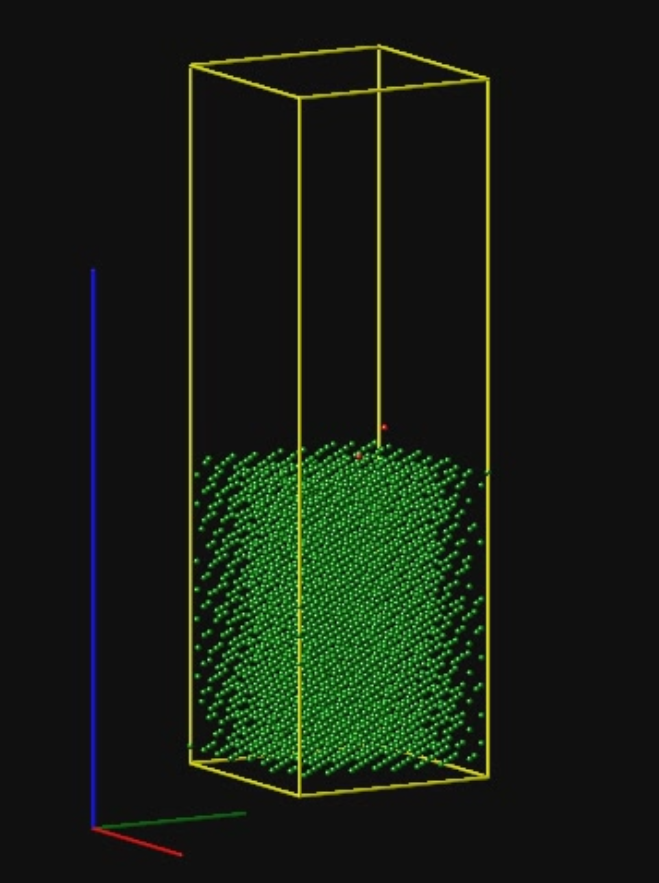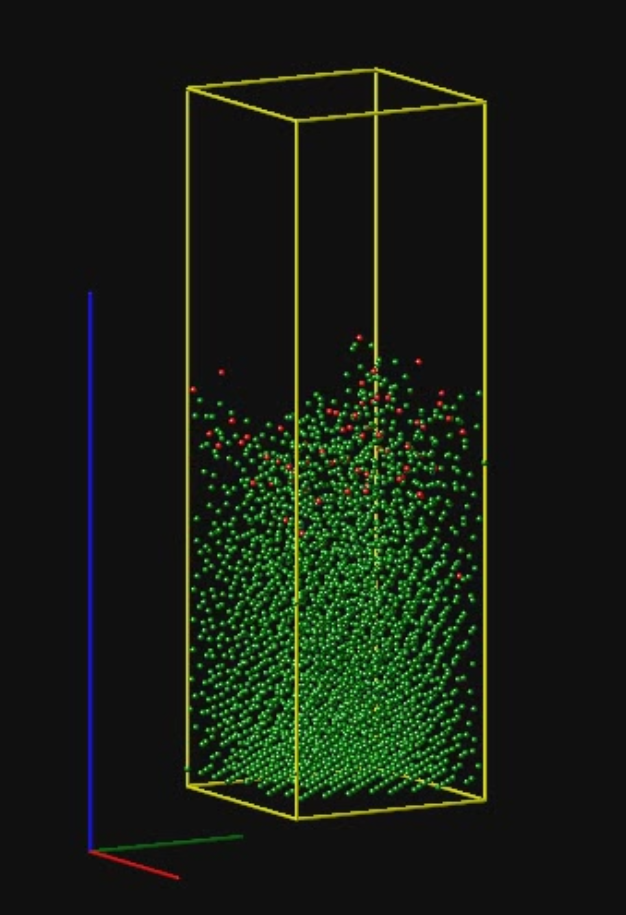Hi,
I am depositing 100 oxygen atoms of a silver surface. I am use fix reax/c/species to see what silver has left the surface to ultimately track erosion. However, the fix reax/c/species is considering it as one large molecule which is not making sense. The molecule contains 67 O, and the other 33 bounce off the surface. When I look at the image after deposition there is a significant growth of the iron and it really does not look bonded.
As another test I shrunk my box so that the initial silver substrate only had 12 A to expand and anything past that was considered eroded. In this I observed that over 120 silver atoms were greater than 12 A away from the original surface! I believe this is far further than what the oxide layer thickness should be yet it is still considered bonded.
Moreover, between the 0-12A there are 45 of the 67 oxygen atoms. Meaning there is only 22 left to bond with the 120 that are lost. There is no AgO combination that would make this work.
Why then is reax/c/species still considering it as one big bonded molecule?

